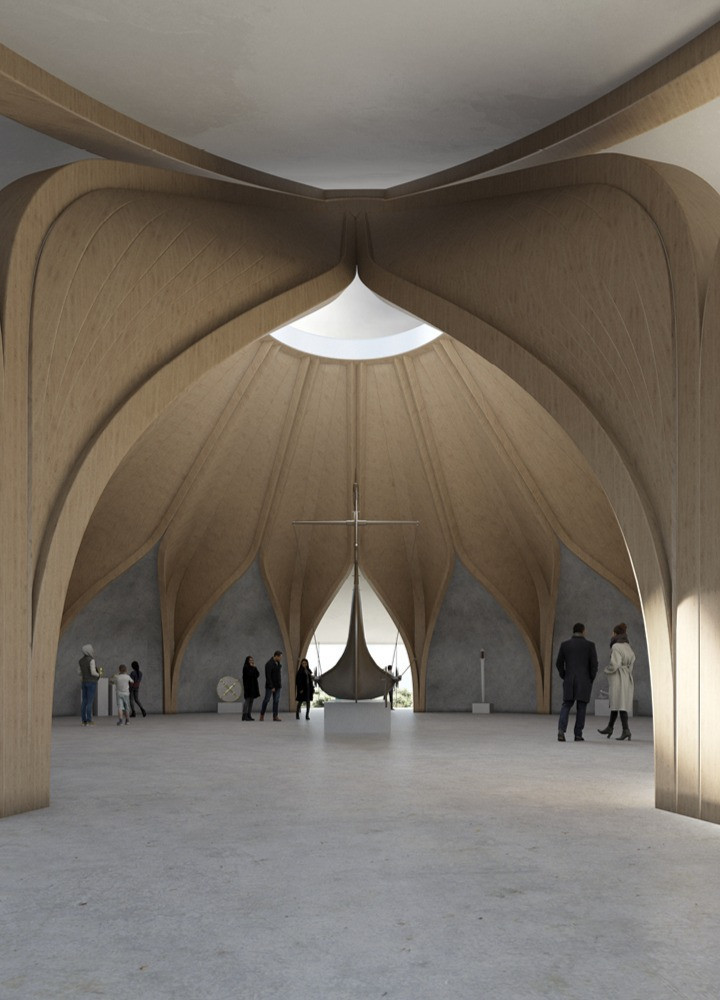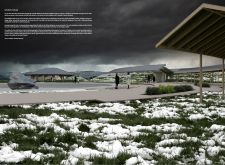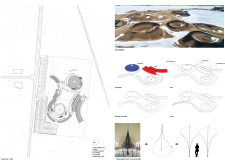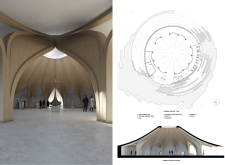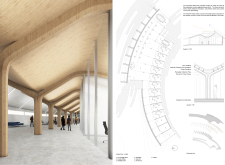5 key facts about this project
The Icelandic Volcano Museum is located near Lake Myvatn, an area known for its distinct volcanic landscape. It serves as a center for education about Iceland’s geological features. The design emphasizes a connection to the surrounding environment, combining contemporary architectural elements with the region's cultural history.
Architecture Concept
The concept of the museum focuses on blending with the landscape. Visitors arrive to see a small pseudocrater, creating a transition from the natural world to the built form. The circular shape of the exhibition hall is intentional, allowing it to endure the Icelandic climate while accommodating strong winds, which enhances its durability.
Spatial Organization
The exhibition hall acts as the main space for the museum, providing shelter and warmth. Its layout is designed to support visitor flow and enhance engagement. Low-profile offices adjacent to the hall offer stability and complement the main structure. The roof's undulating shape draws inspiration from Norse boat designs, linking the building to historical narratives of the region.
Environmental Integration
The museum incorporates the local geography in meaningful ways. Surrounding the building is permeable landscaping, showing a commitment to environmental sustainability. This design approach reflects traditional building practices and fosters a respectful relationship with the natural surroundings.
Cultural Resonance
The architecture aims to evoke a sense of Iceland's volcanic identity, creating a connection between the building and its historical context. The details in the construction reflect the local landscape, reinforcing the bond between nature and culture. The roof's flowing lines serve as a reminder of the area’s maritime history, grounding the design in a rich narrative that resonates with visitors.


